A Historical Perspective on Education in Communist China
VerifiedAdded on 2023/04/10
|23
|5116
|320
Report
AI Summary
This report provides a comprehensive overview of the education system in Communist China, examining its historical roots, the influence of Mao Zedong's thoughts, and the reforms implemented after 1949. It delves into the obstacles to educational reform, including geographic, demographic, linguistic, administrative, social, and economic factors, as well as the impact of the pre-1949 school system and foreign education. The report analyzes the structure of full-time and part-time schools, the role and training of teachers, and the influence of moral-political educators such as the Communist Party, the People's Liberation Army, and youth organizations. Furthermore, it explores the impact of the Cultural Revolution on education, including the motivations of students, the criticism and transformation of the old system, and the selection process for tertiary schooling. The report concludes with a bibliography and chronological table for further research.
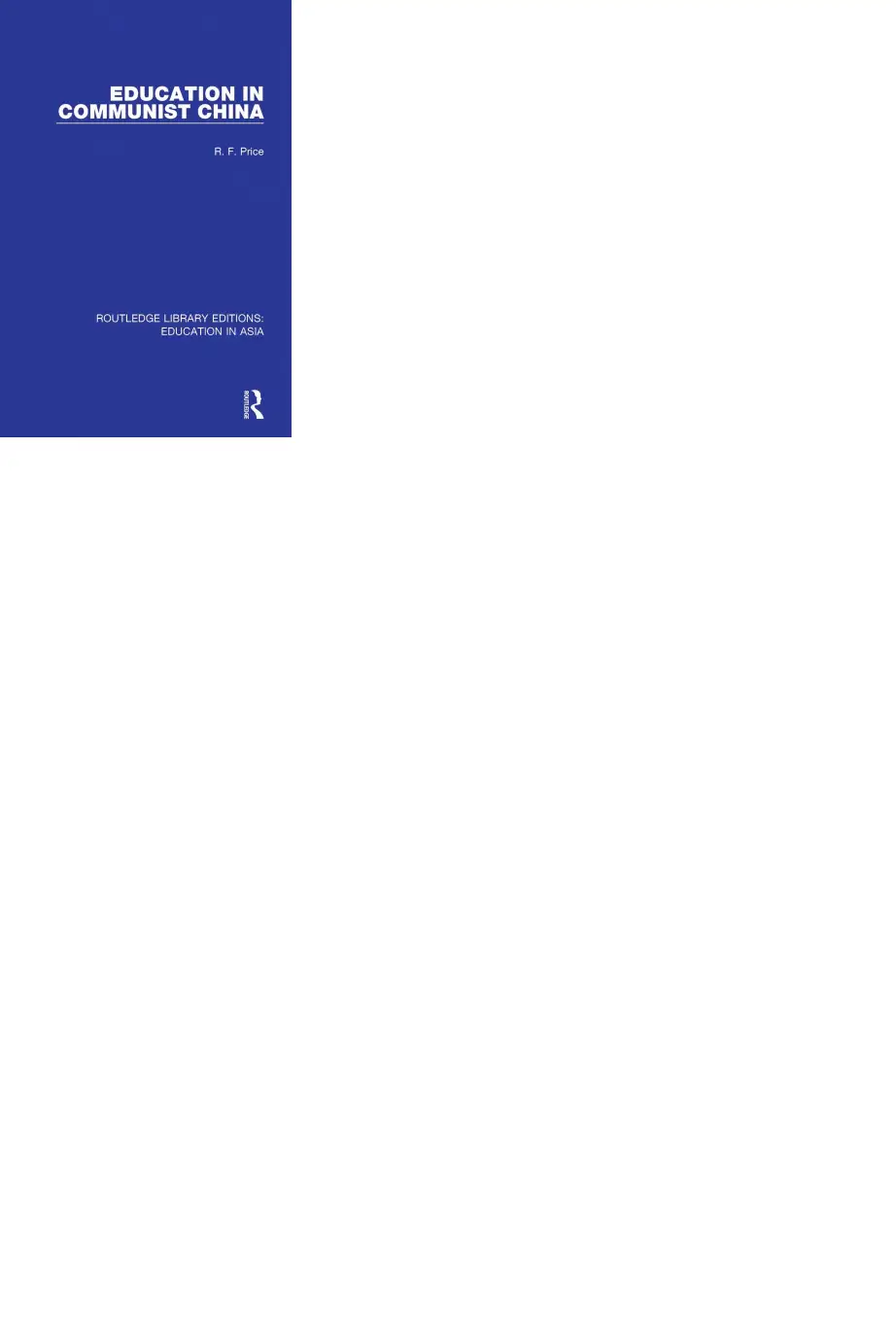
Paraphrase This Document
Need a fresh take? Get an instant paraphrase of this document with our AI Paraphraser
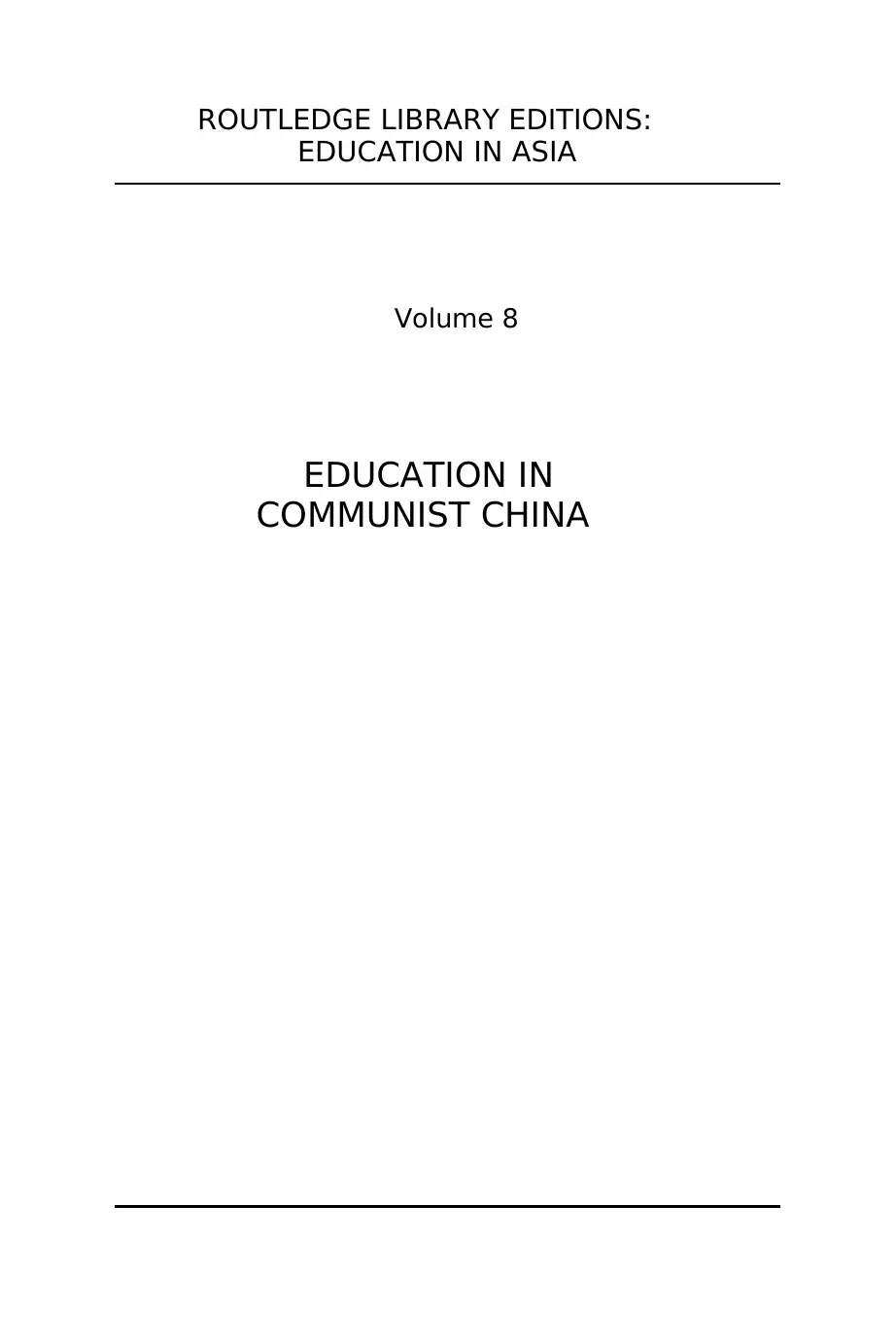
ROUTLEDGE LIBRARY EDITIONS:
EDUCATION IN ASIA
Volume 8
EDUCATION IN
COMMUNIST CHINA
EDUCATION IN ASIA
Volume 8
EDUCATION IN
COMMUNIST CHINA

⊘ This is a preview!⊘
Do you want full access?
Subscribe today to unlock all pages.

Trusted by 1+ million students worldwide
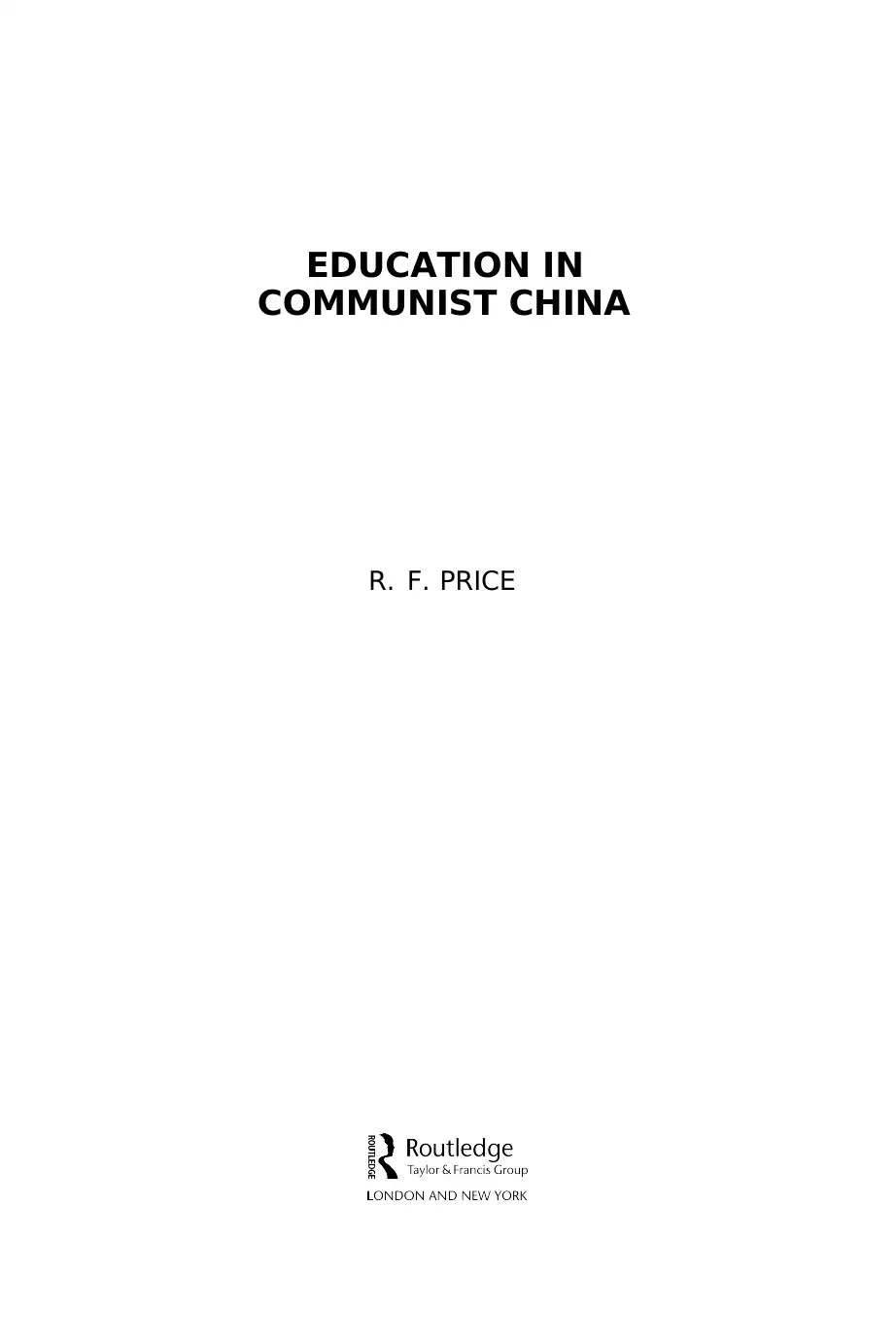
EDUCATION IN
COMMUNIST CHINA
R. F. PRICE
COMMUNIST CHINA
R. F. PRICE
Paraphrase This Document
Need a fresh take? Get an instant paraphrase of this document with our AI Paraphraser
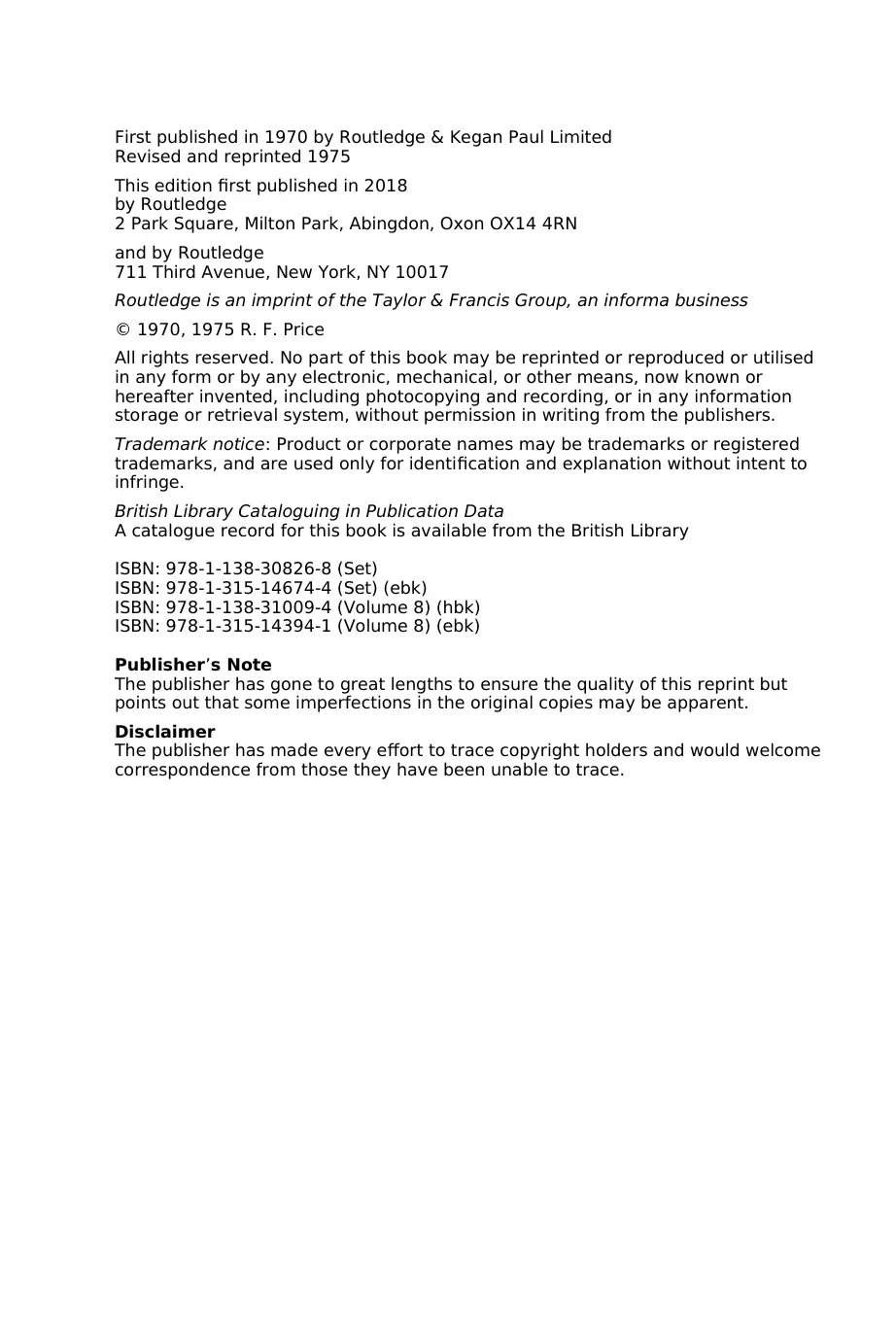
First published in 1970 by Routledge & Kegan Paul Limited
Revised and reprinted 1975
This edition first published in 2018
by Routledge
2 Park Square, Milton Park, Abingdon, Oxon OX14 4RN
and by Routledge
711 Third Avenue, New York, NY 10017
Routledge is an imprint of the Taylor & Francis Group, an informa business
© 1970, 1975 R. F. Price
All rights reserved. No part of this book may be reprinted or reproduced or utilised
in any form or by any electronic, mechanical, or other means, now known or
hereafter invented, including photocopying and recording, or in any information
storage or retrieval system, without permission in writing from the publishers.
Trademark notice: Product or corporate names may be trademarks or registered
trademarks, and are used only for identification and explanation without intent to
infringe.
British Library Cataloguing in Publication Data
A catalogue record for this book is available from the British Library
ISBN: 978-1-138-30826-8 (Set)
ISBN: 978-1-315-14674-4 (Set) (ebk)
ISBN: 978-1-138-31009-4 (Volume 8) (hbk)
ISBN: 978-1-315-14394-1 (Volume 8) (ebk)
Publisher’s Note
The publisher has gone to great lengths to ensure the quality of this reprint but
points out that some imperfections in the original copies may be apparent.
Disclaimer
The publisher has made every effort to trace copyright holders and would welcome
correspondence from those they have been unable to trace.
Revised and reprinted 1975
This edition first published in 2018
by Routledge
2 Park Square, Milton Park, Abingdon, Oxon OX14 4RN
and by Routledge
711 Third Avenue, New York, NY 10017
Routledge is an imprint of the Taylor & Francis Group, an informa business
© 1970, 1975 R. F. Price
All rights reserved. No part of this book may be reprinted or reproduced or utilised
in any form or by any electronic, mechanical, or other means, now known or
hereafter invented, including photocopying and recording, or in any information
storage or retrieval system, without permission in writing from the publishers.
Trademark notice: Product or corporate names may be trademarks or registered
trademarks, and are used only for identification and explanation without intent to
infringe.
British Library Cataloguing in Publication Data
A catalogue record for this book is available from the British Library
ISBN: 978-1-138-30826-8 (Set)
ISBN: 978-1-315-14674-4 (Set) (ebk)
ISBN: 978-1-138-31009-4 (Volume 8) (hbk)
ISBN: 978-1-315-14394-1 (Volume 8) (ebk)
Publisher’s Note
The publisher has gone to great lengths to ensure the quality of this reprint but
points out that some imperfections in the original copies may be apparent.
Disclaimer
The publisher has made every effort to trace copyright holders and would welcome
correspondence from those they have been unable to trace.
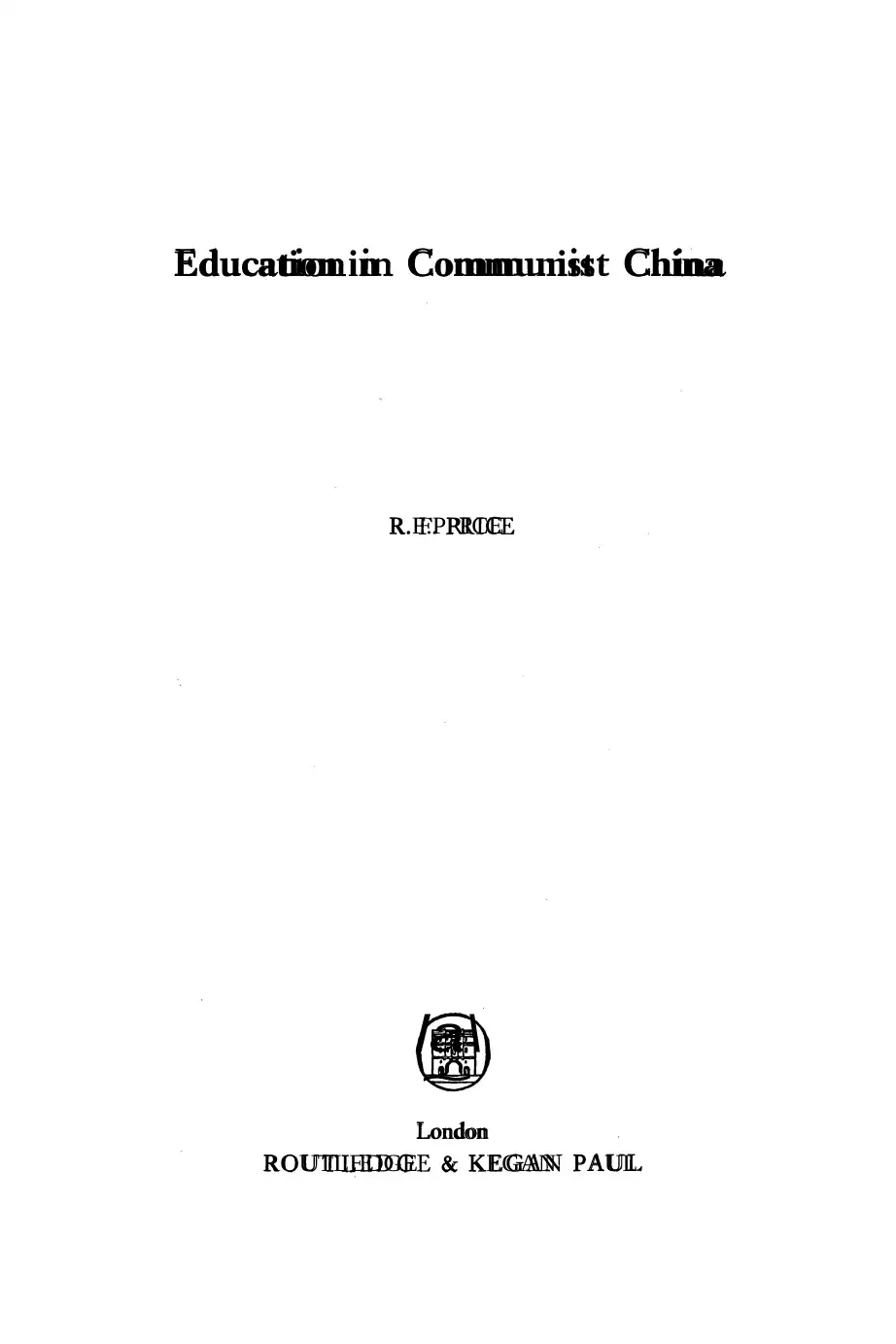
Education in Communist China
R.F.PRICE
la\
~
London
ROUTLEDGE & KEGAN PAUL
R.F.PRICE
la\
~
London
ROUTLEDGE & KEGAN PAUL
⊘ This is a preview!⊘
Do you want full access?
Subscribe today to unlock all pages.

Trusted by 1+ million students worldwide
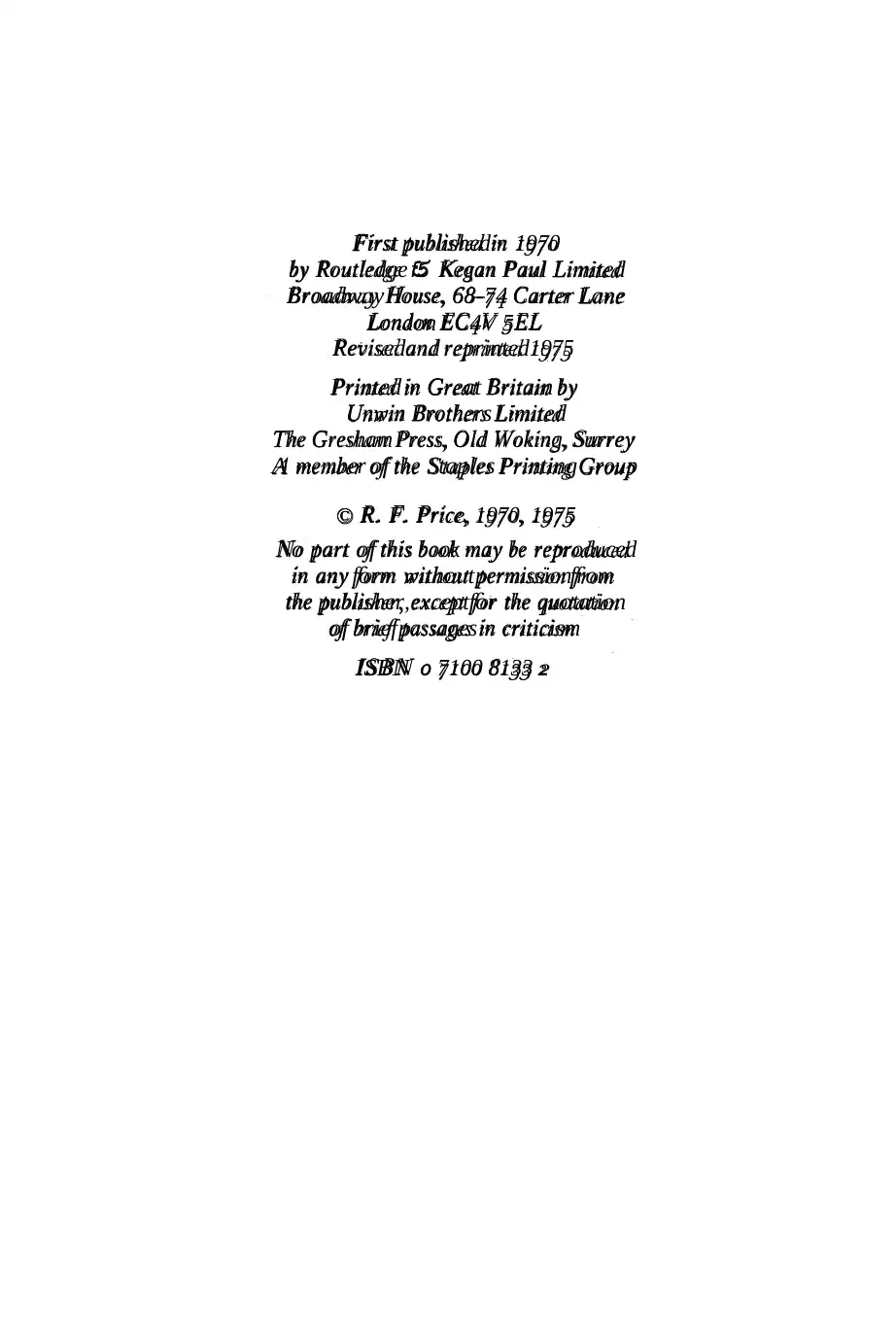
First published in 1970
by Routledge f5 Kegan Paul Limited
Broadway House, 68-74 Carter Lane
London EC4V 5EL
Revisedand reprinted 1975
Printed in Great Britain by
Unwin Brothers Limited
The Gresham Press, Old Woking, Surrey
A member of the Staples Printing Group
© R. F. Price, 1970, 1975
No part of this book may be reproduced
in any form without permissionfrom
the publisher, exceptfor the quotation
of brief passages in criticism
ISBN o 7100 8133 2
by Routledge f5 Kegan Paul Limited
Broadway House, 68-74 Carter Lane
London EC4V 5EL
Revisedand reprinted 1975
Printed in Great Britain by
Unwin Brothers Limited
The Gresham Press, Old Woking, Surrey
A member of the Staples Printing Group
© R. F. Price, 1970, 1975
No part of this book may be reproduced
in any form without permissionfrom
the publisher, exceptfor the quotation
of brief passages in criticism
ISBN o 7100 8133 2
Paraphrase This Document
Need a fresh take? Get an instant paraphrase of this document with our AI Paraphraser

To Erika

⊘ This is a preview!⊘
Do you want full access?
Subscribe today to unlock all pages.

Trusted by 1+ million students worldwide
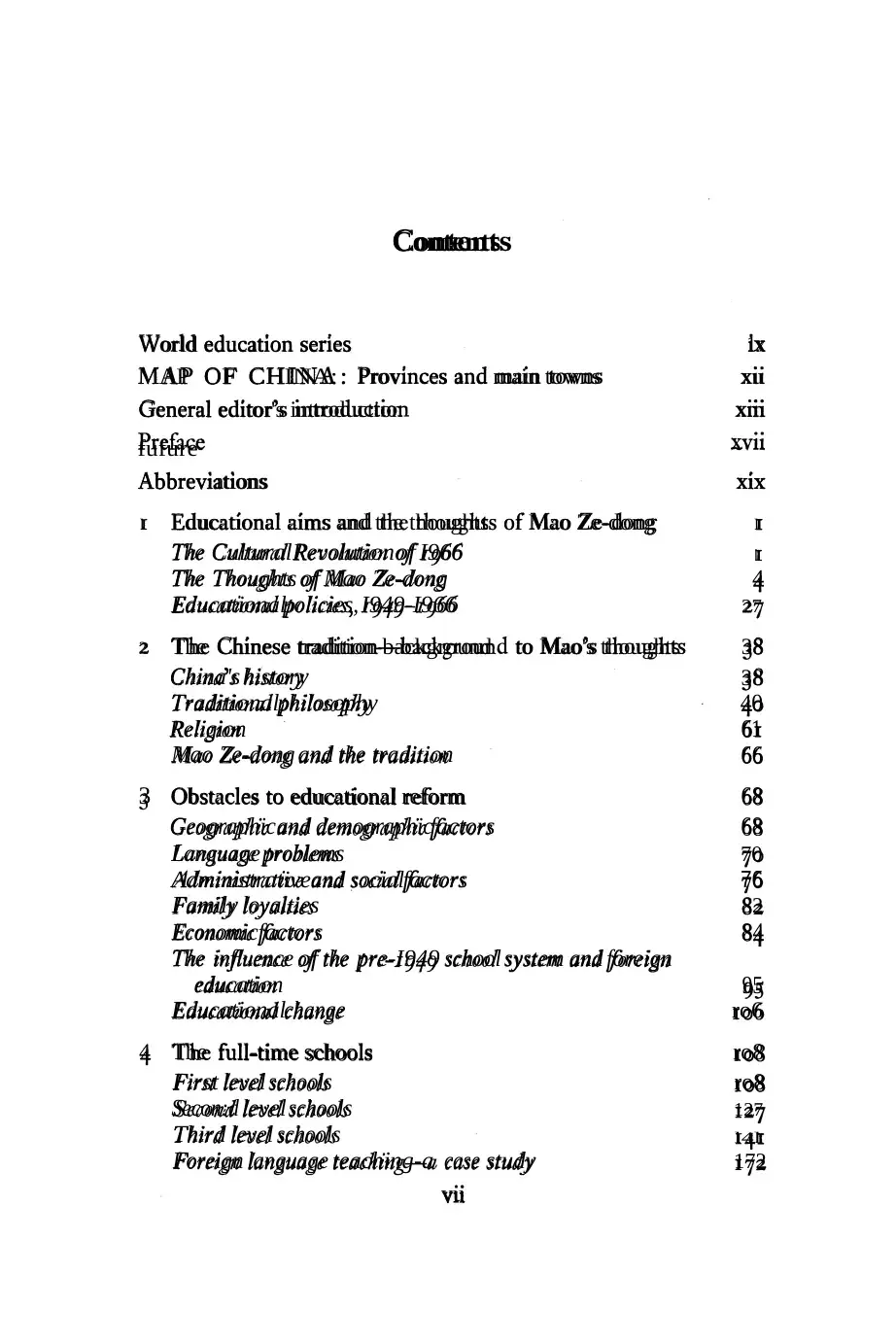
Contents
World education series 1x
MAP OF CHINA: Provinces and main towns xu
General editor's introduction xm
fufure ~·
Abbreviations xix
l Educational aims and the thoughts of Mao Ze-dong l
The Cultural Revolution of I966 l
The Thoughts of Mao Ze-dong 4
Educationalpolicies, I949-I966 27
2 The Chinese tradition-background to Mao's thoughts 38
China's history 38
Traditionalphilosophy 40
Religion 61
Mao Ze-dong and the tradition 66
3 Obstacles to educational reform 68
Geographic and demographicfactors 68
Language problems 70
Administrativeand socialfactors 76
Family loyalties 82
Economicfactors 84
The influence of the pre-I949 school system and foreign
education 95
Educationalchange ro6
4 The full-time schools ro8
First level schools ro8
Secon:d level schools 127
Third level schools l4l
Foreign language teaching-a case study 172
vu
World education series 1x
MAP OF CHINA: Provinces and main towns xu
General editor's introduction xm
fufure ~·
Abbreviations xix
l Educational aims and the thoughts of Mao Ze-dong l
The Cultural Revolution of I966 l
The Thoughts of Mao Ze-dong 4
Educationalpolicies, I949-I966 27
2 The Chinese tradition-background to Mao's thoughts 38
China's history 38
Traditionalphilosophy 40
Religion 61
Mao Ze-dong and the tradition 66
3 Obstacles to educational reform 68
Geographic and demographicfactors 68
Language problems 70
Administrativeand socialfactors 76
Family loyalties 82
Economicfactors 84
The influence of the pre-I949 school system and foreign
education 95
Educationalchange ro6
4 The full-time schools ro8
First level schools ro8
Secon:d level schools 127
Third level schools l4l
Foreign language teaching-a case study 172
vu
Paraphrase This Document
Need a fresh take? Get an instant paraphrase of this document with our AI Paraphraser
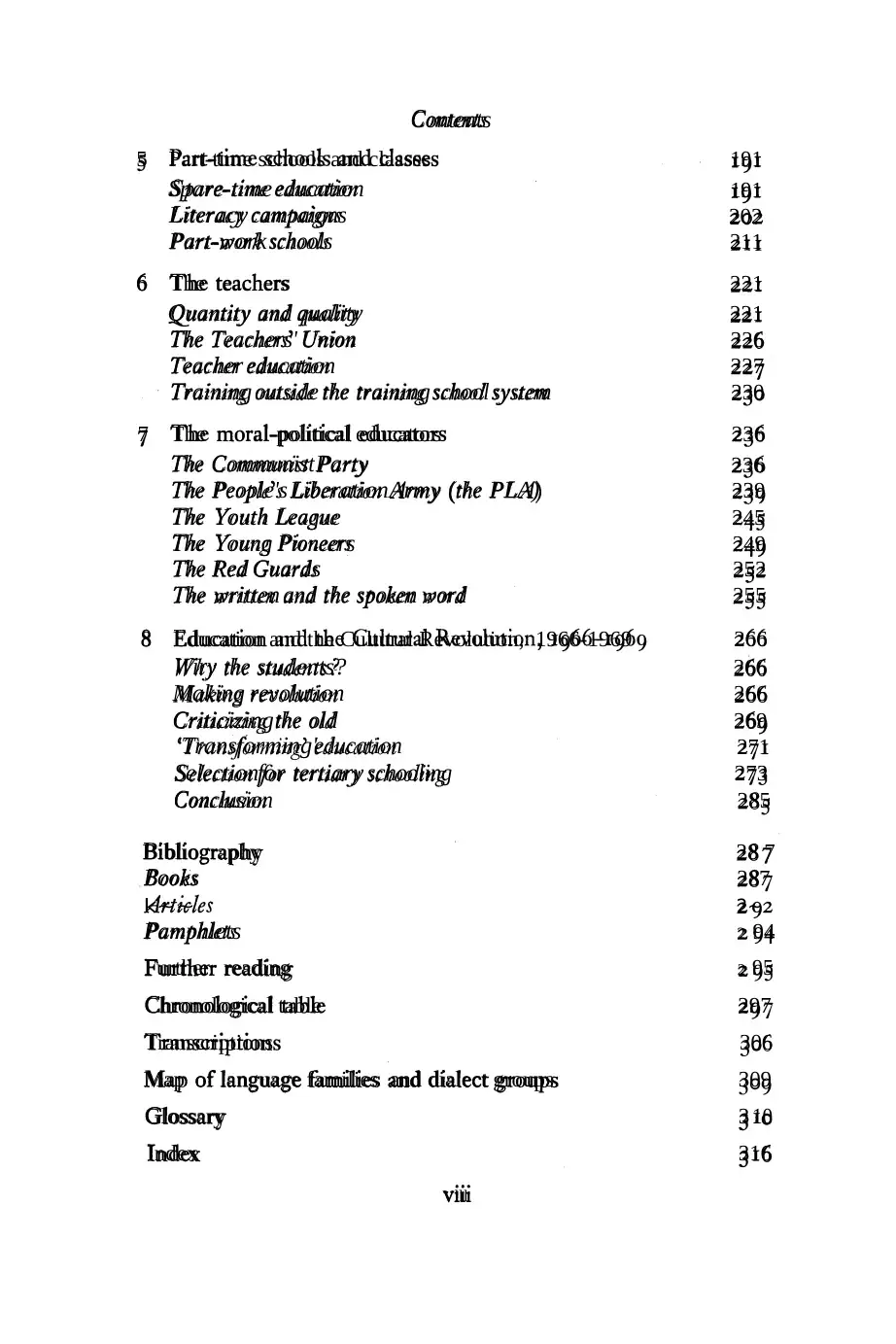
Contents
5 Part-time schools and classes 191
Spare-time education 191
Literacy campaigns 202
Part-work schools 211
6 The teachers 221
Quantity and quality 221
The Teachers' Union 226
Teacher education 227
Training outside the training school system 230
7 The moral-political educators 236
The Communist Party 236
The People's Liberation Army (the PLA) 239
The Youth League 245
The Young Pioneers 249
The Red Guards 252
The written and the spoken word 255
8 Education and the Cultural Revolution, 1966-1969 266
Wiry the students? 266
Making revolution 266
Criticizing the old 269
'Transforming'education 271
Selectionfor tertiary schooling 273
Conclusion 285
Bibliography 28 7
Books 287
k~~ 2~
Pamphlets 2 94
Further reading 2 95
Chronological table 297
Transcriptions 306
Map of language families and dialect groups 309
Glossary 3 10
Index 316
Vlll
5 Part-time schools and classes 191
Spare-time education 191
Literacy campaigns 202
Part-work schools 211
6 The teachers 221
Quantity and quality 221
The Teachers' Union 226
Teacher education 227
Training outside the training school system 230
7 The moral-political educators 236
The Communist Party 236
The People's Liberation Army (the PLA) 239
The Youth League 245
The Young Pioneers 249
The Red Guards 252
The written and the spoken word 255
8 Education and the Cultural Revolution, 1966-1969 266
Wiry the students? 266
Making revolution 266
Criticizing the old 269
'Transforming'education 271
Selectionfor tertiary schooling 273
Conclusion 285
Bibliography 28 7
Books 287
k~~ 2~
Pamphlets 2 94
Further reading 2 95
Chronological table 297
Transcriptions 306
Map of language families and dialect groups 309
Glossary 3 10
Index 316
Vlll
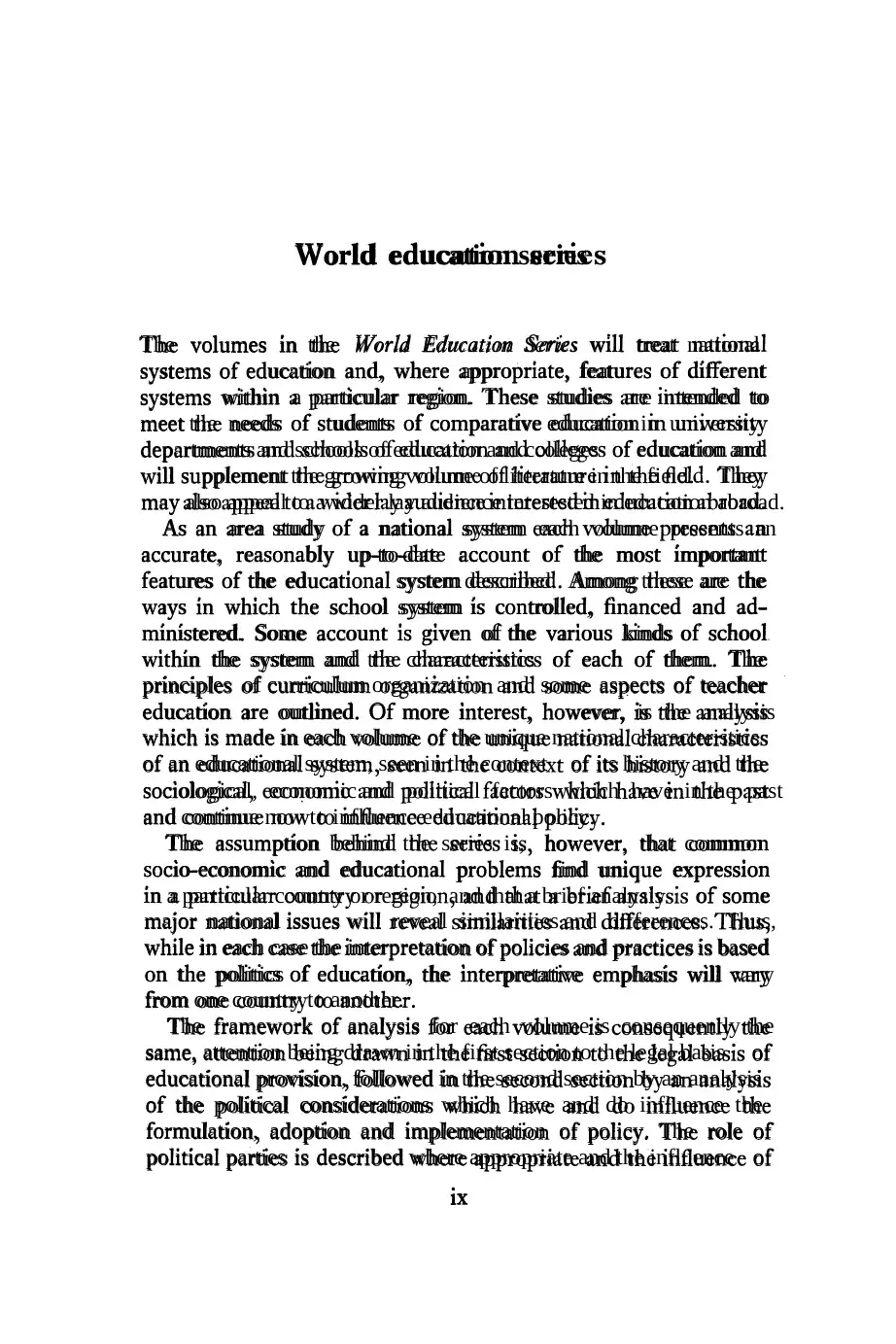
World education series
The volumes in the World Education Series will treat national
systems of education and, where appropriate, features of different
systems within a particular region. These studies are intended to
meet the needs of students of comparative education in university
departments and schools of education and colleges of education and
will supplement the growing volume of literature in the field. They
may also appeal to a wider lay audience interested in education abroad.
As an area study of a national system each volume presents an
accurate, reasonably up-to-date account of the most important
features of the educational system described. Among these are the
ways in which the school system is controlled, financed and ad-
ministered. Some account is given of the various kinds of school
within the system and the characteristics of each of them. The
principles of curriculum organization and some aspects of teacher
education are outlined. Of more interest, however, is the analysis
which is made in each volume of the unique national characteristics
of an educational system, seen in the context of its history and the
sociological, economic and political factors which have in the past
and continue now to influence educational policy.
The assumption behind the series is, however, that common
socio-economic and educational problems find unique expression
in a particular country or region, and that a brief analysis of some
major national issues will reveal similarities and differences. Thus,
while in each case the interpretation of policies and practices is based
on the politics of education, the interpretative emphasis will vary
from one country to another.
The framework of analysis for each volume is consequently the
same, attention being drawn in the first section to the legal basis of
educational provision, followed in the second section by an analysis
of the political considerations which have and do influence the
formulation, adoption and implementation of policy. The role of
political parties is described where appropriate and the influence of
1X
The volumes in the World Education Series will treat national
systems of education and, where appropriate, features of different
systems within a particular region. These studies are intended to
meet the needs of students of comparative education in university
departments and schools of education and colleges of education and
will supplement the growing volume of literature in the field. They
may also appeal to a wider lay audience interested in education abroad.
As an area study of a national system each volume presents an
accurate, reasonably up-to-date account of the most important
features of the educational system described. Among these are the
ways in which the school system is controlled, financed and ad-
ministered. Some account is given of the various kinds of school
within the system and the characteristics of each of them. The
principles of curriculum organization and some aspects of teacher
education are outlined. Of more interest, however, is the analysis
which is made in each volume of the unique national characteristics
of an educational system, seen in the context of its history and the
sociological, economic and political factors which have in the past
and continue now to influence educational policy.
The assumption behind the series is, however, that common
socio-economic and educational problems find unique expression
in a particular country or region, and that a brief analysis of some
major national issues will reveal similarities and differences. Thus,
while in each case the interpretation of policies and practices is based
on the politics of education, the interpretative emphasis will vary
from one country to another.
The framework of analysis for each volume is consequently the
same, attention being drawn in the first section to the legal basis of
educational provision, followed in the second section by an analysis
of the political considerations which have and do influence the
formulation, adoption and implementation of policy. The role of
political parties is described where appropriate and the influence of
1X
⊘ This is a preview!⊘
Do you want full access?
Subscribe today to unlock all pages.

Trusted by 1+ million students worldwide
1 out of 23
Your All-in-One AI-Powered Toolkit for Academic Success.
+13062052269
info@desklib.com
Available 24*7 on WhatsApp / Email
![[object Object]](/_next/static/media/star-bottom.7253800d.svg)
Unlock your academic potential
Copyright © 2020–2025 A2Z Services. All Rights Reserved. Developed and managed by ZUCOL.
